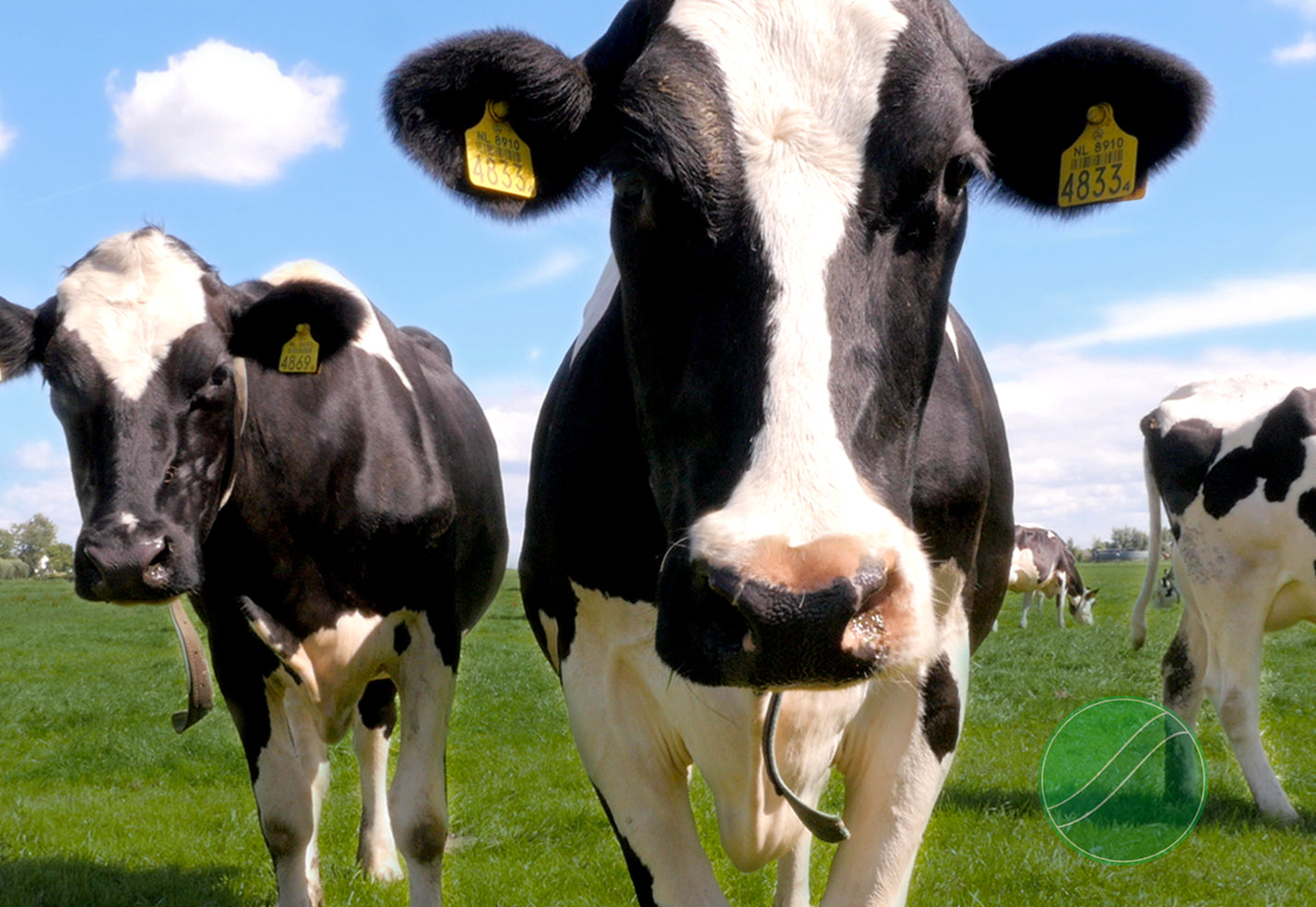The dairy industry plays a vital role in feeding the world's growing population. However, as the demand for dairy products increases, so does the environmental impact of dairy farming, particularly in terms of methane emissions. This articles explores what methane emissions are, how they occur in dairy ruminants, and why reducing these emissions is crucial for a sustainable future.
What Are Dairy Ruminant Methane Emissions?
Methane (CH₄) is a potent greenhouse gas that is over 25 times more effective at trapping heat in the atmosphere than carbon dioxide (CO₂) over a 100-year period. In dairy farming, methane emissions primarily originate from enteric fermentation—a natural digestive process in ruminants, such as cows. During this process, microorganisms in the rumen (a specialised stomach chamber) break down fibrous plant material, producing methane as a byproduct which is primarily burped and exhaled by the animal into the atmosphere.
How Do Methane Emissions Occur in Dairy Cows?
The digestive system of dairy cows is uniquely adapted to process tough plant fibres. The rumen, home to a complex and diverse microbiome, plays a crucial role in this process. Here's a step-by-step look at how methane is produced:
- Ingestion: Cows consume feed that includes fibrous plant material.
- Fermentation: In the rumen, microbes (bacteria, archaea, protozoa, and fungi) break down the feed through fermentation.
- Methane Production: Methanogenic archaea, a type of microbe in the rumen, produce methane as a metabolic byproduct.
- Release: The cow releases methane primarily through belching.
The Problem with Methane Emissions for the Environment?
Methane emissions from dairy ruminants contribute significantly to global greenhouse gas emissions, exacerbating climate change. Here are some key reasons why methane emissions are harmful:
- High Global Warming Potential: Methane's ability to trap heat in the atmosphere makes it a major driver of global warming.
- Climate Change Acceleration: Increased methane levels contribute to more rapid climate changes, leading to extreme weather events, sea-level rise, and disruptions to ecosystems.
- Environmental Degradation: Methane emissions from livestock can lead to degraded air quality and negatively impact surrounding ecosystems.
Methane Mitigation
As the global population grows, so does the demand for dairy products. This growth puts additional pressure on the environment due to the increase in dairy farming and, consequently, methane emissions. To mitigate this impact, it is crucial to adopt strategies to reduce methane emissions from dairy ruminants. Here are some approaches:
- Improved Feed Quality: Optimising the diet of dairy cows to include feed additives and supplements that reduce methane production.
- Advanced Breeding Techniques: Breeding cows that naturally produce less methane.
- Innovative Technologies: Utilizing technologies such as methane capture systems and precision livestock farming to monitor and reduce emissions.
- Sustainable Farming Practices: Implementing sustainable agricultural practices, such as rotational grazing and manure management, to reduce the overall environmental footprint.
Addressing methane emissions in the dairy industry is essential for a sustainable future. By understanding the sources and impacts of methane, and by adopting innovative solutions, we can ensure that the growth of the dairy sector does not come at the expense of our planet. Reducing methane emissions not only helps combat climate change but also promotes healthier and more productive dairy farming practices, benefiting both farmers and the environment.
As we continue to strive for a greener future, it's clear that methane matters. Tackling ruminant emissions is a critical step towards a more sustainable and resilient agricultural system that can support a growing global population.
